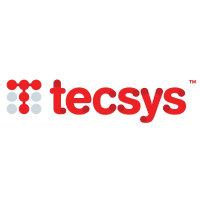
Tecsys Inc
TSX:TCS


| US |

|
Johnson & Johnson
NYSE:JNJ
|
Pharmaceuticals
|
| US |

|
Berkshire Hathaway Inc
NYSE:BRK.A
|
Financial Services
|
| US |

|
Bank of America Corp
NYSE:BAC
|
Banking
|
| US |

|
Mastercard Inc
NYSE:MA
|
Technology
|
| US |

|
UnitedHealth Group Inc
NYSE:UNH
|
Health Care
|
| US |

|
Exxon Mobil Corp
NYSE:XOM
|
Energy
|
| US |

|
Pfizer Inc
NYSE:PFE
|
Pharmaceuticals
|
| US |

|
Palantir Technologies Inc
NYSE:PLTR
|
Technology
|
| US |

|
Nike Inc
NYSE:NKE
|
Textiles, Apparel & Luxury Goods
|
| US |

|
Visa Inc
NYSE:V
|
Technology
|
| CN |

|
Alibaba Group Holding Ltd
NYSE:BABA
|
Retail
|
| US |

|
3M Co
NYSE:MMM
|
Industrial Conglomerates
|
| US |

|
JPMorgan Chase & Co
NYSE:JPM
|
Banking
|
| US |

|
Coca-Cola Co
NYSE:KO
|
Beverages
|
| US |

|
Walmart Inc
NYSE:WMT
|
Retail
|
| US |

|
Verizon Communications Inc
NYSE:VZ
|
Telecommunication
|
Utilize notes to systematically review your investment decisions. By reflecting on past outcomes, you can discern effective strategies and identify those that underperformed. This continuous feedback loop enables you to adapt and refine your approach, optimizing for future success.
Each note serves as a learning point, offering insights into your decision-making processes. Over time, you'll accumulate a personalized database of knowledge, enhancing your ability to make informed decisions quickly and effectively.
With a comprehensive record of your investment history at your fingertips, you can compare current opportunities against past experiences. This not only bolsters your confidence but also ensures that each decision is grounded in a well-documented rationale.
Do you really want to delete this note?
This action cannot be undone.

| 52 Week Range |
32.59
47.31
|
| Price Target |
|
We'll email you a reminder when the closing price reaches CAD.
Choose the stock you wish to monitor with a price alert.

|
Johnson & Johnson
NYSE:JNJ
|
US |

|
Berkshire Hathaway Inc
NYSE:BRK.A
|
US |

|
Bank of America Corp
NYSE:BAC
|
US |

|
Mastercard Inc
NYSE:MA
|
US |

|
UnitedHealth Group Inc
NYSE:UNH
|
US |

|
Exxon Mobil Corp
NYSE:XOM
|
US |

|
Pfizer Inc
NYSE:PFE
|
US |

|
Palantir Technologies Inc
NYSE:PLTR
|
US |

|
Nike Inc
NYSE:NKE
|
US |

|
Visa Inc
NYSE:V
|
US |

|
Alibaba Group Holding Ltd
NYSE:BABA
|
CN |

|
3M Co
NYSE:MMM
|
US |

|
JPMorgan Chase & Co
NYSE:JPM
|
US |

|
Coca-Cola Co
NYSE:KO
|
US |

|
Walmart Inc
NYSE:WMT
|
US |

|
Verizon Communications Inc
NYSE:VZ
|
US |
This alert will be permanently deleted.
 Tecsys Inc
Tecsys Inc
Tecsys Inc
TECSYS, Inc. engages in the development and marketing of enterprise wide distribution software and related services. The company is headquartered in Montreal, Quebec and currently employs 655 full-time employees. The firm also provides related consulting, education, and support services. The Company’s supply chain solutions include Elite enterprise, Elite healthcare, Omni retail, and Streamline. The company also offers business consulting services, including warehousing and inventory management, transportation and logistics, procurement planning, business intelligence, accounting and finance, and business process re-engineering. The firm offers a range of services, including support services, system enhancement, cloud services, advisory services, software as a service subscriptions, maintenance and support services, professional services (including implementation, consulting and training services provided to customers as well as reimbursable expenses), licenses and hardware.

TECSYS, Inc. engages in the development and marketing of enterprise wide distribution software and related services. The company is headquartered in Montreal, Quebec and currently employs 655 full-time employees. The firm also provides related consulting, education, and support services. The Company’s supply chain solutions include Elite enterprise, Elite healthcare, Omni retail, and Streamline. The company also offers business consulting services, including warehousing and inventory management, transportation and logistics, procurement planning, business intelligence, accounting and finance, and business process re-engineering. The firm offers a range of services, including support services, system enhancement, cloud services, advisory services, software as a service subscriptions, maintenance and support services, professional services (including implementation, consulting and training services provided to customers as well as reimbursable expenses), licenses and hardware.






























 You don't have any saved screeners yet
You don't have any saved screeners yet
